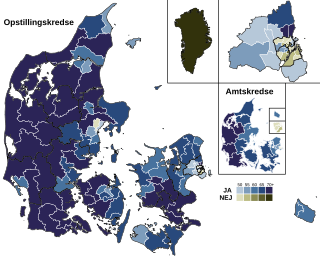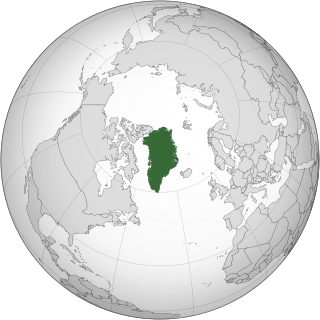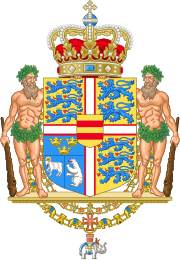
The Folketing, also known as the Parliament of Denmark or the Danish Parliament in English, is the unicameral national legislature (parliament) of the Kingdom of Denmark—Denmark proper together with the Faroe Islands and Greenland. Established in 1849, until 1953 the Folketing was the lower house of a bicameral parliament, called the Rigsdag; the upper house was the Landsting. It meets in Christiansborg Palace, on the islet of Slotsholmen in central Copenhagen.

The Danish Act of Succession, adopted on 5 June 1953, restricts the throne to those descended from Christian X and his wife, Alexandrine of Mecklenburg-Schwerin, through approved marriages. By a change in the law in 2009, succession is governed by absolute primogeniture.

There are three types of elections in Denmark: elections to the national parliament, local elections, and elections to the European Parliament. Referendums may also be called to consult the Danish citizenry directly on an issue of national concern.
Same-sex marriage has been legal in Denmark since 15 June 2012. A bill for the legalization of same-sex marriages was introduced by the Thorning-Schmidt I Cabinet, and approved by the Folketing on 7 June 2012. It received royal assent by Queen Margrethe II on 12 June and took effect three days later. Denmark was the eleventh country in the world and the eighth in Europe to legalize same-sex marriage. It was the first country in the world to enact registered partnerships, which provided same-sex couples with almost all of the rights and benefits of marriage, in 1989.

The Constitutional Act of the Realm of Denmark, also known as the Constitutional Act of the Kingdom of Denmark, or simply the Constitution, is the constitution of the Kingdom of Denmark, applying equally in the Realm of Denmark: Denmark proper, Greenland and the Faroe Islands. The first democratic constitution was adopted in 1849, replacing the 1665 absolutist constitution. The current constitution is from 1953. The Constitutional Act has been changed a few times. The wording is general enough to still apply today.

A referendum on joining the European Economic Community was held in Denmark on 2 October 1972. The result was 63.3% in favour with a turnout of 90.1%. The law that Denmark should be member of the EEC was passed on 11 October 1972, and Denmark became a member on 1 January 1973.

A constitutional and electoral age referendum was held in Denmark on 28 May 1953. Both proposals were approved by voters, leading to both a new constitution taking effect on 5 June, and the electoral age being lowered from 25 to 23 years, also starting on 5 June. Voter turnout was 59.1% for the constitution question and 57.1% for the voting age question.

Denmark holds opt-outs from European Union policies in relation to police and justice and the adoption of the euro. They were secured under the Edinburgh Agreement in 1992 after a referendum for the ratification of the Maastricht Treaty was rejected by Danish voters, as a package of measure to assuage concerns raised during that referendum.

Lesbian, gay, bisexual, and transgender (LGBT) rights in Greenland are some of the most extensive in the Americas and the world, relatively similar to those in Denmark proper in Europe. Same-sex sexual activity is legal, with an equal age of consent, and there are some anti-discrimination laws protecting LGBT people. Same-sex couples had access to registered partnerships, which provided them with nearly all of the rights provided to married opposite-sex couples, from 1996 to 2016. On 1 April 2016, a law repealing the registered partnership act and allowing for same-sex marriages to be performed came into effect.
Same-sex marriage has been legal in Greenland since 1 April 2016. Same-sex marriage legislation passed the Inatsisartut unanimously on 26 May 2015. Approval by the Folketing followed on 19 January 2016, and the law received royal assent on 3 February. The first same-sex marriage was performed in Nuuk on 1 April.

Same-sex marriage is legal in the following countries: Andorra, Argentina, Australia, Austria, Belgium, Brazil, Canada, Chile, Colombia, Costa Rica, Cuba, Denmark, Ecuador, Estonia, Finland, France, Germany, Greece, Iceland, Ireland, Luxembourg, Malta, Mexico, the Netherlands, New Zealand, Norway, Portugal, Slovenia, South Africa, Spain, Sweden, Switzerland, Taiwan, the United Kingdom, the United States, and Uruguay.

The politics of Denmark take place within the framework of a parliamentary representative democracy, a constitutional monarchy and a decentralised unitary state in which the monarch of Denmark, King Frederik X, is the head of state. Denmark is a nation state. Danish politics and governance are characterized by a common striving for broad consensus on important issues, within both the political community and society as a whole.

The Court of Impeachment of the Realm is a special court of the Kingdom of Denmark, that the Danish Parliament can assemble, to hear and deliver judgments against ministers accused of unlawful misconduct and maladministration of office. According to the wording of the Constitutional Act, the Queen can also demand that Ministers be impeached and brought before the Court of Impeachment. However, in practice only Government has this right.

Aarhus West nominating district is one of the 92 nominating districts that exists for Danish elections following the 2007 municipal reform. It is one of the four nomination districts in Aarhus Municipality, the others being Aarhus South, Aarhus North and Aarhus East. It was created in 1970, with its boundaries being slightly changed in 2007.

Aarhus East nominating district is one of the 92 nominating districts that exists for Danish elections following the 2007 municipal reform. It is one of the four nomination districts in Aarhus Municipality, the others being Aarhus South, Aarhus West and Aarhus North. It was created in 1970, with its boundaries being slightly changed in 2007.

Odense East nominating district is one of the 92 nominating districts that exists for Danish elections following the 2007 municipal reform. It is one of the three nomination districts in Odense Municipality, the others being Odense West and Odense South. It was created in 1970 and has maintained its boundaries since then.

Odense West nominating district is one of the 92 nominating districts that exists for Danish elections following the 2007 municipal reform. It is one of the three nomination districts in Odense Municipality, the others being Odense East and Odense South. It was created in 1970 and has maintained its boundaries since then.

Rødovre nominating district is one of the 92 nominating districts that exists for Danish elections following the 2007 municipal reform. It consists of Herlev and Rødovre municipality. It was created in 1966 and has maintained its boundaries since then.

Ballerup nominating district is one of the 92 nominating districts that was created for Danish elections following the 2007 municipal reform. It consists of Ballerup and Glostrup municipality. It was created in 1970, though its boundaries have been changed since then.

Tårnby nominating district is one of the 92 nominating districts that was created for Danish elections following the 2007 municipal reform. It consists of Dragør and Tårnby municipality. It has existed under the current boundaries since 1966. Prior to 2007 it was known as the Amager district.

















